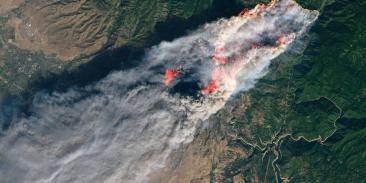Analysis Of Air Quality Report Shows New Coal Plants Threaten DFW Air
(Austin – September 14, 2006) Environmental Defense issued an analysis today of a report by the Texas Environmental Research Consortium (TERC) that shows the potential impact of more than a dozen proposed coal-fired power plants on the Dallas – Ft. Worth Metroplex’s regional air quality. The report simulated the transport of these proposed plants’ pollution based on weather data from four high-ozone episodes in 1999 and 2002.
The analysis, conducted by Environmental Defense senior scientist Ramon Alvarez, can be downloaded at http://www.environmentaldefense.org/documents/colin/TERC_Report_Analysis.pdf.
“Every week brings another reason for Texas to slow down this rush to dirty coal,” said Alvarez. “The TERC report shows that emissions from proposed coal plants can significantly increase DFW area ozone levels on key days with south-southeast or northeast winds. And it showed that with slight changes in the assumed wind direction or speed, the pollution plumes from the new plants could increase ozone in the Metroplex’s most polluted areas by amounts roughly comparable to that produced by more than a million of the region’s cars and light duty trucks.”
Early, incomplete drafts of this report were released this summer. TXU, which has proposed to build 11 of the 18 coal-fired power plants, promoted the drafts as proof that the company’s new plants would actually clean the air in the DFW region. The conclusions of the final report dispute that claim.
“The report shows that TXU’s promises of coal-fired power plants that will clean the air in Dallas just don’t add up,” Alvarez said. “The company’s claim that the report finds its proposed offset strategy will improve air quality in the DFW region is untrue.”
Also troubling is the impact that the pollution would have on other regions, such as Austin and Waco. “The study was focused on the Dallas area,” Alvarez said, “but the models clearly show that northeasterly winds would result in significant pollution increases for Central Texas.”
The final TERC report, entitled “Ozone Impacts in DFW of Proposed New EGUs and an Offset Strategy,” can be downloaded at http://files.harc.edu/Projects/AirQuality/Projects/H060/H60FinalReport.pdf
With more than 3 million members, Environmental Defense Fund creates transformational solutions to the most serious environmental problems. To do so, EDF links science, economics, law, and innovative private-sector partnerships to turn solutions into action. edf.org
Latest press releases
-
EDF, Allies File Comments Urging the Trump EPA to Continue the Greenhouse Gas Reporting Program
November 3, 2025 -
Cost of Trump Administration’s Mandates to Keep Michigan Coal Plant Open Balloons to $80 Million
October 31, 2025 -
EDF Strengthens Role in Ocean-Climate Governance with New Consultative Status at the IMO’s London Convention and Protocol
October 31, 2025 -
New analysis finds Indigenous lands and protected areas are key in slowing deforestation
October 28, 2025 -
New Poll: Republicans, Democrats and Independents Strongly Oppose Weakening Chemical Safety Law
October 27, 2025 -
Court Rules New York Must Implement State Climate Law and Deliver Swift Action
October 24, 2025










